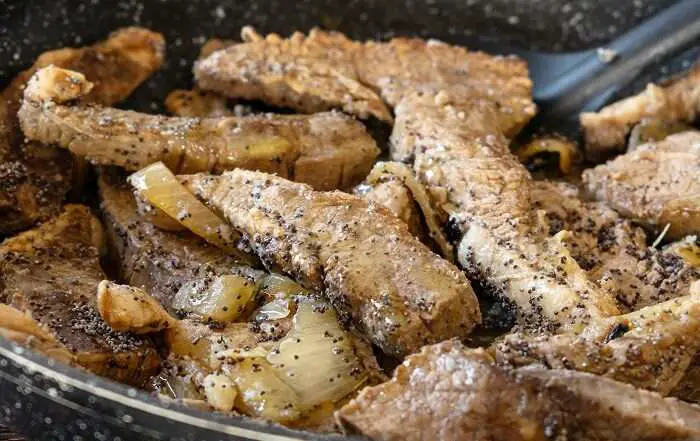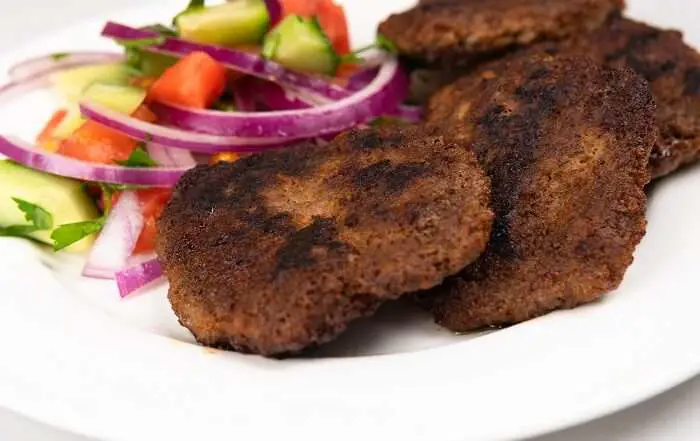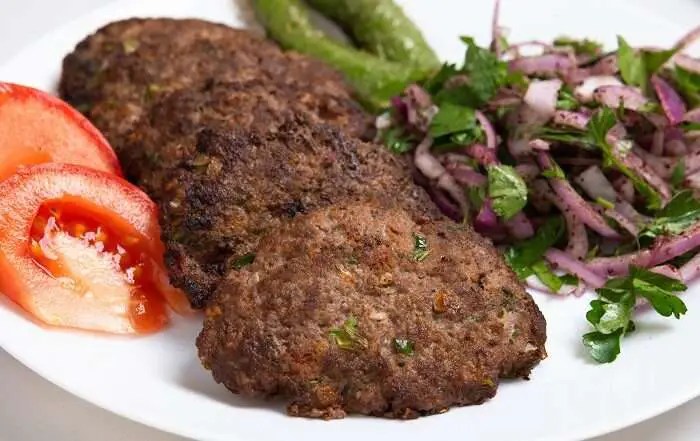Mace is a spice that comes from the same tree as nutmeg, the nutmeg tree (Myristica fragrans). The origin of mace can be traced back to the East Indies, particularly the Molucca Islands (also known as the Spice Islands), which are located in Indonesia.
Here’s how mace is obtained: The nutmeg tree produces both nutmeg and mace. Mace is the reddish-orange, lacy covering (aril) that surrounds the nutmeg seed inside the fruit of the nutmeg tree. After the fruit is harvested and opened, the mace is separated from the nutmeg seed. It is then dried either by exposure to the sun or by using drying machines. Once dried, mace becomes brittle and can be ground into a powder or used in its whole form.
Historically, mace was highly valued during the spice trade era due to its unique flavor and aroma. It was used not only as a spice but also for its medicinal properties. Today, mace is used in various cuisines around the world, often in a similar manner to nutmeg, but with its own distinct flavor profile that is slightly more delicate and aromatic.
Health Benefits
Mace, like its counterpart nutmeg, offers several potential health benefits, although research is ongoing and more evidence is needed to confirm all of its effects. Here are some of the potential health benefits attributed to mace:
Digestive Health: Mace has been traditionally used to aid digestion. It contains compounds that may help stimulate digestion by increasing the secretion of digestive enzymes. This can potentially relieve digestive discomfort such as bloating and gas.
Anti-inflammatory Properties: Mace contains bioactive compounds that have shown anti-inflammatory effects in animal studies. These compounds may help reduce inflammation in the body, which is linked to various chronic diseases.
Antioxidant Activity: Mace contains antioxidants such as phenolic compounds and flavonoids. These antioxidants help neutralize harmful free radicals in the body, which can protect cells from oxidative stress and damage.
Oral Health: In traditional medicine, mace has been used to relieve toothaches. Its antibacterial properties may help combat bacteria in the mouth that contribute to dental plaque and gum disease.
Aphrodisiac Properties: In some cultures, mace is believed to have aphrodisiac properties and is used to enhance libido and sexual performance. This effect is attributed to its ability to stimulate circulation and increase blood flow.
Cognitive Function: Nutmeg and mace contain compounds that may have neuroprotective effects. These compounds could potentially support brain health and cognitive function, although more research is needed to confirm this benefit.
Potential Anti-microbial Effects: Mace has shown some antimicrobial activity against certain types of bacteria and fungi in laboratory studies. This suggests that it may have a role in combating infections, although clinical studies are lacking.
It’s important to note that while mace and nutmeg offer potential health benefits, they should be used in moderation as culinary spices.
Fun Facts
Here are some fun facts about mace:
From the Same Tree as Nutmeg: Mace and nutmeg come from the same tree, Myristica fragrans. Mace is the reddish-orange aril that surrounds the nutmeg seed inside the fruit.
Unique Flavor Profile: Mace has a slightly sweeter and more delicate flavor compared to nutmeg. It is often described as having a warm, nutty, and aromatic taste with hints of pepper and cinnamon.
Historical Value: Like nutmeg, mace was highly prized during the Middle Ages and Renaissance periods. It was considered valuable not only for its culinary uses but also for its medicinal properties, including its reputation as a digestive aid.
Culinary Uses: Mace is used in both sweet and savory dishes. It pairs well with fruits, baked goods, sauces, soups, and meat dishes. It is a common ingredient in spice blends such as curry powder and garam masala.
Preservation: Mace is typically sold in dried, whole pieces or ground into a powder. It can be stored in airtight containers away from light and moisture to preserve its flavor and aroma.
Traditional Medicine: In traditional medicine practices, mace has been used for its anti-inflammatory properties and to aid digestion. It has also been used as a natural remedy for treating toothaches and improving blood circulation.
Symbolism: In some cultures, mace has symbolic significance. For example, in Hindu rituals, mace is associated with purity and is sometimes used in religious ceremonies.
Culinary Traditions: Mace features prominently in various regional cuisines around the world, including Indian, Middle Eastern, and European cuisines, where it adds depth and complexity to dishes ranging from curries to pastries.
Overall, mace is a fascinating spice with a rich history and versatile culinary applications that make it a cherished ingredient in global cuisine.
Use of Mace in Cooking
Mace is a versatile spice that adds a unique flavor and aroma to a variety of dishes. Here are some common and delightful uses of mace in cooking.
When using mace in cooking, it’s best to use it sparingly, as its flavor can be quite potent. Mace can be purchased in whole pieces or ground into a powder. For the freshest flavor, consider grinding whole mace blades using a spice grinder or a fine grater just before use.
Level 1: Using Mace as a Shield to the Immune System
Here are a couple of recipes using mace that may help with cold and digestive issues:
Mace Tea for Cold Relief
Ingredients:
- 1-2 teaspoons of whole mace blades or 1/2 teaspoon of ground mace
- 1 cup of hot water
- Honey (optional, for sweetness)
Instructions:
- Heat water to just below boiling point.
- Place the whole mace blades or ground mace in a teapot or a heat-resistant cup.
- Pour the hot water over the mace.
- Cover and steep for 5-10 minutes.
- Strain the tea to remove the mace pieces.
- Add honey to taste if desired.
Sip the tea slowly while it’s still warm to soothe the throat and help with congestion.
Mace Rice Water for Digestive Relief
Ingredients:
- 1 cup of white rice
- 4 cups of water
- 1-2 whole mace blades or 1/2 teaspoon of ground mace
- Pinch of salt (optional)
Instructions:
- Rinse the rice thoroughly under cold water until the water runs clear.
- In a large pot, combine the rice and water.
- Add the whole mace blades or ground mace to the pot.
- Bring to a boil over medium-high heat, then reduce heat to low and simmer, uncovered, for about 20-30 minutes or until the rice is very soft and the water becomes creamy.
- Remove from heat and strain the rice, reserving the mace-infused rice water.
- Optionally, add a pinch of salt to enhance the flavor.
Drink the warm mace-infused rice water slowly to soothe the digestive system and alleviate discomfort.
Tips:
Variation: You can add a cinnamon stick or a few slices of fresh ginger to either of these recipes for additional flavor and potential health benefits.
Frequency: Drink these teas or rice water as needed, but avoid excessive consumption. One to two cups per day is generally sufficient.
Consultation: If symptoms persist or worsen, or if you have any concerns, consult a healthcare professional.
These recipes provide gentle ways to incorporate mace into your routine to potentially alleviate cold symptoms and support digestive health. Adjust the amount of mace to suit your taste preferences and desired potency.
Level 2: Using Mace in Dinner Dishes
Classic Beef Stew with Mace
In a bowl, toss the beef cubes with flour, salt, and pepper until coated. Heat olive oil in a large pot or Dutch oven over medium-high heat. Add the beef in batches and cook until browned on all sides. Remove the beef and set aside. In the same pot, add the onion, garlic, carrots, and celery. Cook, stirring occasionally, until vegetables are softened, about 5-7 minutes. Stir in the tomato paste and cook for 1-2 minutes. Return the beef to the pot. Add beef broth, dried thyme, bay leaf, and ground mace. Bring to a boil. Reduce heat to low, cover, and simmer for 1.5 to 2 hours, or until beef is tender. Add diced potatoes and continue to simmer, uncovered, until potatoes are cooked through, about 15-20 minutes. Season with additional salt and pepper to taste. Remove bay leaf before serving. Garnish with chopped parsley and serve hot!
Classic Meatloaf with Mace:
Preheat oven to 350°F (175°C). In a bowl, mix together ground beef, breadcrumbs, onion, garlic, egg, milk, salt, pepper, mace, and nutmeg until well combined. Shape the mixture into a loaf and place in a baking dish. Spread ketchup evenly over the top of the meatloaf. Bake for 1 hour or until cooked through and internal temperature reaches 160°F (70°C). Let rest for 10 minutes before slicing!
Mace-Spiced Roasted Chicken
Preheat oven to 400°F (200°C). Rinse the chicken inside and out under cold water and pat dry with paper towels. In a small bowl, combine olive oil, ground mace, paprika, garlic powder, onion powder, dried thyme, salt, and pepper to make a spice rub. Rub the spice mixture all over the chicken, including under the skin and inside the cavity. Place the chicken breast-side up on a roasting pan or baking dish. Roast the chicken in the preheated oven for about 1 hour to 1 hour 15 minutes, or until the internal temperature reaches 165°F (74°C) and the juices run clear. Remove from the oven and let rest for 10 minutes before carving. Garnish with fresh herbs before serving!
Butternut Squash Soup with Mace:
Heat olive oil in a large pot over medium heat. Add onion and garlic, sauté until softened. Add diced butternut squash and cook for 5 minutes, stirring occasionally. Pour in broth, add ground mace, salt, and pepper. Bring to a boil, then reduce heat and simmer until squash is tender (about 20-25 minutes). Use an immersion blender to puree the soup until smooth. Alternatively, blend in batches in a regular blender. Adjust seasoning if needed. Serve hot, garnished with a drizzle of cream, toasted pumpkin seeds, and fresh herbs if desired!






